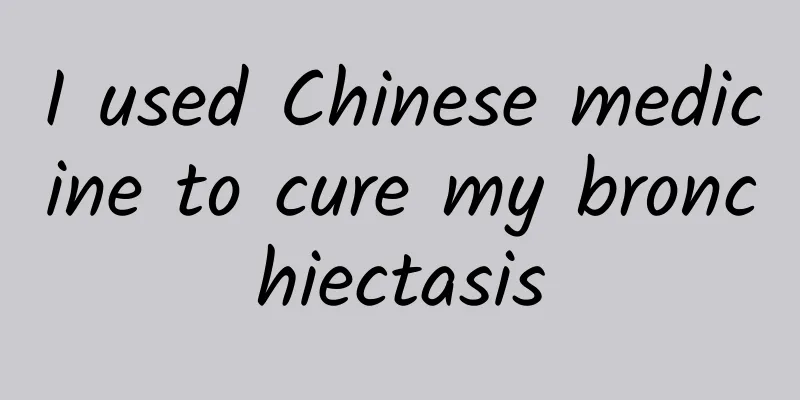What are the sequelae of cholecystectomy?

|
Patients who undergo cholecystectomy are prone to sequelae, and if these sequelae are not effectively treated and controlled, they will pose a great threat to health and can easily cause reflux gastritis, esophagitis, or long-term indigestion and bloating, and may even cause common bile duct stones. 1. Cholecystectomy may cause alkaline reflux gastritis and esophagitis: After a normal person eats, the gallbladder contracts, causing a large amount of bile to enter the intestine. This process is carried out in a regular and synchronous manner with the secretion and peristalsis of the stomach and duodenum. After cholecystectomy, the loss of bile reserve function causes bile to be continuously discharged into the duodenum instead of intermittent and meal-related excretion, increasing the chance of reflux into the stomach, leading to bile reflux gastritis and esophagitis. I think the above two points are due to the so-called "flooding" caused by the lack of gallbladder. 2. Cholecystectomy may cause indigestion, abdominal distension, and diarrhea: In addition to the functions of storage, concentration and contraction, the gallbladder also has complex chemical and immune functions. Bile is secreted by liver cells. Liver cells secrete about 800-1200 ml of bile every day, of which 97% is water. Bile secreted by hepatocytes enters the gallbladder through the intrahepatic and extrahepatic bile ducts and along the cystic duct for storage and concentration. The concentrated bile is 30 times more concentrated than the bile secreted by the liver and is stored in the gallbladder. After eating, especially high-fat food, the gallbladder contracts and discharges bile into the duodenum to participate in digestion under the regulation of the vagus nerve and cholecystokinin. If the gallbladder is removed, the bile secreted and excreted by the liver cells has nowhere to store, so the bile has to continue to be discharged into the intestines regardless of whether the body needs it or not. The production, flow and function of bile and the gallbladder can also be described in a popular and vivid metaphor: bile is like the water of the Yangtze River, the intrahepatic and extrahepatic bile ducts are like the Yangtze River, the gallbladder is like Dongting Lake and Poyang Lake, the Oddi's sphincter is like Wusongkou, and the duodenum is like the East China Sea. The water dissolved from the Qinghai-Tibet Plateau flows into the upper reaches of the Yangtze River through various tributaries, rushing to the Wusongkou and into the East China Sea; Dongting Lake and Poyang Lake store about 40% of the water for the Yangtze River. The gallbladder not only stores bile, but also concentrates bile. The bile discharged from the liver is stored in the gallbladder and concentrated. When needed (that is, when eating high-fat foods), the gallbladder contracts to discharge the concentrated bile to aid digestion. We need a large amount of high-concentration bile to help digestion when we eat, but at this time there is no "excess bile" in the body to help, which affects the digestion and absorption of food, especially the digestion and absorption of fat. As a result, it induces steatorrhea and a deficiency of fat-soluble vitamins; causing indigestion, abdominal distension, diarrhea, weight loss, sallow face, etc. 3. The incidence of common bile duct stones increases after cholecystectomy: During the treatment of common bile duct stones, it was found that the incidence of bile duct stones in the cholecystectomy group was significantly higher than that in the non-cholecystectomy group. Although gallbladder stones are removed after cholecystectomy, it is very likely to "invite" common bile duct stones. It is generally believed that without a gallbladder, the stones have nowhere to grow and have to survive in the bile duct. In fact, the causes of gallbladder stones are different from those of bile duct stones. But the presence of the gallbladder directly affects the formation of bile duct stones. This is because before cholecystectomy, the gallbladder has the function of concentrating bile, and the concentrated bile has a higher solubility for cholesterol. After cholecystectomy, the bile salts are significantly reduced, and the bile has lost its place to concentrate. The bile acid concentration in the hepatobiliary duct is reduced, resulting in a decrease in the ability to dissolve cholesterol. Over time, cholesterol is easily accumulated, which makes it easy to form stones. From the principle of "fluid mechanics", after cholecystectomy, the fluid pressure in the bile duct loses its buffering effect, resulting in increased pressure in the common bile duct, causing compensatory expansion of the common bile duct, thereby slowing down the bile flow rate in the common bile duct and causing vortices or eddies, which are an important theory of gallstone formation. |
<<: What are the problems with H-type hypertension?
>>: How is the effect of interventional treatment for advanced liver cancer?
Recommend
How to make licorice tea
I believe everyone is familiar with licorice. Lic...
How to treat dermatitis
Dermatitis is already a very common skin disease....
What to eat for mild cerebral infarction
Mild cerebral infarction is a disease caused by c...
Small pimples on feet
Our feet bear the weight of our entire body. Afte...
Chinese patent medicine for the treatment of neurasthenia: good habits are the key
Under excessive stressful life and work pressure,...
How to exercise to enlarge breasts, 9 kinds of exercise to train proud bust
Breast enhancement is a topic that will never go ...
Symptoms of Bronchitis Recovery
Bronchitis is a relatively common respiratory dis...
What are the symptoms of fractures?
A fracture refers to a break in the bone structur...
Why don't children poop?
There are many reasons why children have less bow...
What to do if you have anxiety disorder and migratory pain
There are many symptoms of anxiety disorder. Beca...
Is Chinese medicine effective for spot treatment?
In real life, many people have spots on their fac...
Difference between bone marrow biopsy and bone marrow puncture
Bone marrow biopsy and bone marrow puncture are t...
Symptoms of Liver Qi Stagnation
Traditional Chinese medicine believes that liver ...
What food should I eat if my spleen is not in good condition?
For some people with poor spleen, how to eat scie...
The efficacy and function of traditional Chinese medicine placenta
Everyone knows that the benefit of traditional Ch...









